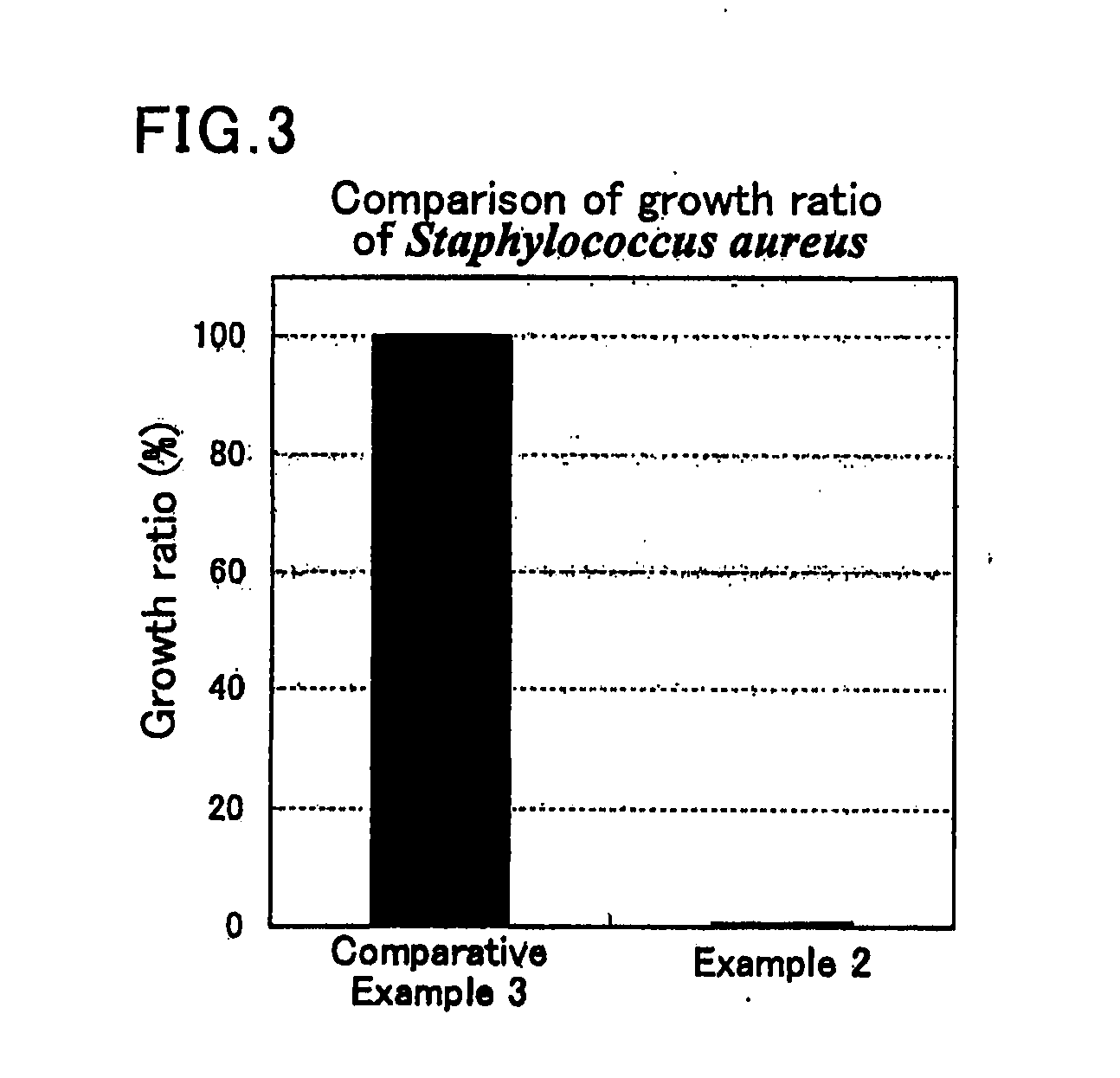Lactobacillus strain and food having antifungal activity
a technology of lactobacillus and antifungal activity, which is applied in the field of lactobacillus strain and food having antifungal activity, can solve the problems of loss of commercial value, acidic or alcoholic smell, bread quality deterioration, etc., and achieve enhanced antifungal effect, enhanced growth inhibitory effect, and good flavor, taste and texture
- Summary
- Abstract
- Description
- Claims
- Application Information
AI Technical Summary
Benefits of technology
Problems solved by technology
Method used
Image
Examples
example 1
[0146]The following materials were used in an MYP liquid medium.
[0147]Maltose: “maltose monohydrate” (Wako Pure Chemical Industries Ltd.)
[0148]Yeast Extract: “Yeast Extract” (Difco)
[0149]Peptone: “Peptone, Bacto TM” (Difco)
[0150]Sodium acetate: “sodium acetate trihydrate” (Wako Pure Chemical Industries Ltd.)
[0151]Sodium glutamate: “L-glutamic acid monosodium salt” (Wako Pure Chemical Industries Ltd.)
[0152]Magnesium sulfate: “magnesium sulfate heptahydrate” (Wako Pure Chemical Industries Ltd.)
[0153]Manganese sulfate: “Manganese (II) sulfate tetrahydrate” (Wako Pure Chemical Industries Ltd.)
[0154]Ferrous sulfate: “iron (II) sulfate heptahydrate” (Wako . Pure Chemical Industries Ltd.)
[0155]Sodium chloride: “sodium chloride” (Wako Pure Chemical Industries Ltd.)
[0156]Tween 80: “polyoxyethylene (20) sorbitan monooleate” (Wako Pure Chemical Industries Ltd.)
[0157]The following materials were used for bread making.
[0158]Flour: “Eagle” (Nippon Flour Mills Co., Ltd.)
[0159]Yeast: ...
example 2
[0172]The same MYP liquid medium and bread making materials as those of Example 1 were used in Example 2. A bread was made by the sponge and dough method. The materials in amounts shown in Table 5 were mixed, and the mixture was kneaded at 24° C. and allowed to ferment at 28° C. at 75 RH% for 12 hours. In this manner, a starter was obtained.
TABLE 5MaterialsPart(s) by weightFlour (bread flour)100Liquid or powder of lactic acid bacterium1Water120
[0173]Next, a sponge was prepared by mixing the starter of Table 5 and the other materials shown in Table 6. The sponge was kneaded at 24° C. while the mixing condition was controlled to a low speed for three minutes. Subsequently, the sponge was allowed to ferment at 28° C. at 75RH % for four hours.
TABLE 6MaterialsPart(s) by weightFlour (bread flour)70Yeast2Starter20Water40
[0174]The sponge of Table 6 and the materials in amounts shown in Table 7 were mixed and the resulting dough was kneaded. After the kneading, the dough was di...
PUM
| Property | Measurement | Unit |
|---|---|---|
| temperature | aaaaa | aaaaa |
| diameter | aaaaa | aaaaa |
| pH | aaaaa | aaaaa |
Abstract
Description
Claims
Application Information
 Login to View More
Login to View More - R&D
- Intellectual Property
- Life Sciences
- Materials
- Tech Scout
- Unparalleled Data Quality
- Higher Quality Content
- 60% Fewer Hallucinations
Browse by: Latest US Patents, China's latest patents, Technical Efficacy Thesaurus, Application Domain, Technology Topic, Popular Technical Reports.
© 2025 PatSnap. All rights reserved.Legal|Privacy policy|Modern Slavery Act Transparency Statement|Sitemap|About US| Contact US: help@patsnap.com


